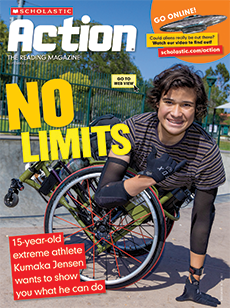Teach onomatopoeia to foster appreciation for literary devices.
After reading the article, tell students that onomatopoeia means words that sound like the thing they stand for. Ask:
- In the first section of the article, what does the word POOF! describe? (It describes the sound of the space rock exploding.)
- The section “A Huge Fireball” includes the words BOOM! SMASH! What do these words describe? (These words describe the sounds of walls falling down and windows shattering as the full force of the explosion reached Earth.)
Next, ask students to think of other sound words. Challenge them to make the sound each word represents, using their bodies or items they have on hand. (Some examples of sound words are bang, crash, crunch, growl, hiss, jingle, rumble, snap, and squeak.)
Looking for more ELL support?
Download our full lesson plan and scroll to p. 5 to find questions that will help your ELLs respond to the text at the level that’s right for them.
